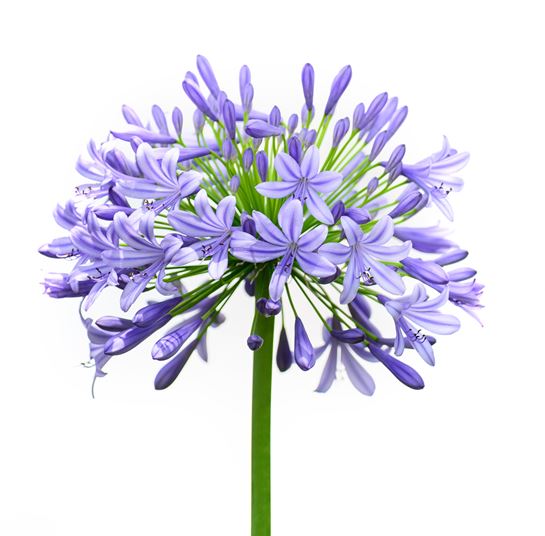Grasping the Art of Agapanthus Care: Crucial Steps for Healthy Growth and Lively Blossoms
In the world of horticulture, the cultivation of agapanthus stands as a gratifying venture for those that look for to support these stylish flowering plants. With their striking flowers and graceful foliage, agapanthus has captured the attention of gardeners worldwide. Nevertheless, achieving optimal growth and vivid blooms calls for a nuanced technique that includes numerous crucial actions. From selecting the right variety to grasping pruning techniques, the trip in the direction of cultivating prospering agapanthus plants is multifaceted and holds the essential to unlocking the complete possibility of these agricultural treasures.

Picking the Right Agapanthus Variety

When picking the right Agapanthus variety for your garden, think about aspects such as environment viability, blossom shade, and development habit. Agapanthus, typically understood as Lily of the Nile or African lily, comes in a selection of colors ranging from tones of purple and blue to white. Pick a blossom shade that enhances your existing yard scheme to create a harmonious landscape. Furthermore, consider the environment in your region to guarantee the Agapanthus variety you choose can prosper in your specific conditions. Some ranges are more forgiving of cold temperature levels, while others like warmer climates. Understanding the development routine of various Agapanthus ranges is important for proper placement within your yard. Some ranges have a clumping development routine, suitable for borders or containers, while others have an even more spreading nature, ideal for ground cover or mass growings. By very carefully examining these elements, you can choose the ideal Agapanthus selection to boost the charm of your yard.
Perfect Growing Conditions
Taking into consideration the optimum environmental requirements is essential for successful Agapanthus growing. Agapanthus thrives in well-draining dirt with a somewhat acidic to neutral pH level. When planting, choose a place that obtains complete sunshine to partial color. In hotter climates, supplying some mid-day color can avoid scorching of the fallen leaves. Agapanthus plants are delicate to cool temperatures and ought to be safeguarded from frost throughout winter season.
To ensure healthy development and vivid blossoms, plant Agapanthus light bulbs at a depth of about 2-4 inches and space them 8-12 inches apart. Mulching around the base of the plants aids maintain moisture and subdues weed growth.
Watering and Fertilizing Tips
Preserving proper wetness degrees and supplying important nutrients are vital aspects in the treatment regimen for Agapanthus plants. When it comes to watering Agapanthus, it is critical to strike an equilibrium. These plants prefer continually wet soil but are at risk to root rot if overwatered.
Fertilizing Agapanthus is necessary for advertising healthy and balanced development and respected flowers. Use a well balanced plant food, such as a 10-10-10 formula, in the very early spring as read here new growth emerges. Repeat this application every 6-8 weeks throughout the growing period. Stay clear of too much fertilizing, as it can lead to lush foliage at the cost of flowers. Constantly comply with the supplier's guidelines for correct dilution and application techniques. By complying with these watering and fertilizing suggestions, browse around these guys you can ensure your Agapanthus plants prosper and create vibrant, durable blooms.
Pruning Strategies for Agapanthus
Trimming Agapanthus plants at the appropriate times and with proper strategies is crucial for keeping their health and wellness and promoting ideal growth and flowering. The excellent time to trim Agapanthus remains in late winter season or early springtime prior to new growth arises. Begin by removing any dead or yellowing leaves near the base of the plant. Cut them as short as feasible without damaging the emerging shoots.
Deadheading spent blossoms can also reroute the plant's power into creating even more blooms instead than establishing seeds. If you desire to accumulate seeds for proliferation, leave some flowers to fully grown and dry on the plant.
Bear in mind to use tidy, sharp tools to make specific cuts and minimize the threat of presenting diseases. Agapanthus. Routine pruning will certainly aid maintain your Agapanthus looking neat and healthy while ensuring an abundant display screen of attractive flowers
Managing Common Bugs and Diseases
After making sure correct trimming methods for Agapanthus, it is necessary to deal with typical bugs and conditions that can affect the health and wellness and vigor of these plants. One typical pest that impacts Agapanthus is the Agapanthus gall midge.
Additionally, Agapanthus plants can endure from origin rot if they are planted in poorly draining pipes dirt. By being watchful and taking prompt activity against pests and conditions, you can help your Agapanthus plants prosper and create dynamic flowers. Agapanthus.

Verdict
To conclude, grasping the art of agapanthus treatment entails picking the best range, giving excellent planting problems, appropriate watering and feeding, proper trimming methods, and resolving typical pests and illness. By adhering to these important steps, you can guarantee healthy and balanced development and vivid check these guys out flowers for your agapanthus plants. Keep in mind to frequently keep track of and keep your plants to advertise their total wellness and longevity.
To make certain healthy and balanced growth and vivid blossoms, plant Agapanthus bulbs at a depth of regarding 2-4 inches and area them 8-12 inches apart. By complying with these watering and fertilizing pointers, you can ensure your Agapanthus plants thrive and produce vibrant, resilient blooms.
One usual insect that affects Agapanthus is the Agapanthus gall midget. Additionally, Agapanthus plants can endure from origin rot if they are planted in inadequately draining pipes dirt. By complying with these important actions, you can guarantee healthy and balanced growth and vivid flowers for your agapanthus plants.
Comments on “Agapanthus Varieties: Picking the Best for Your Landscape”